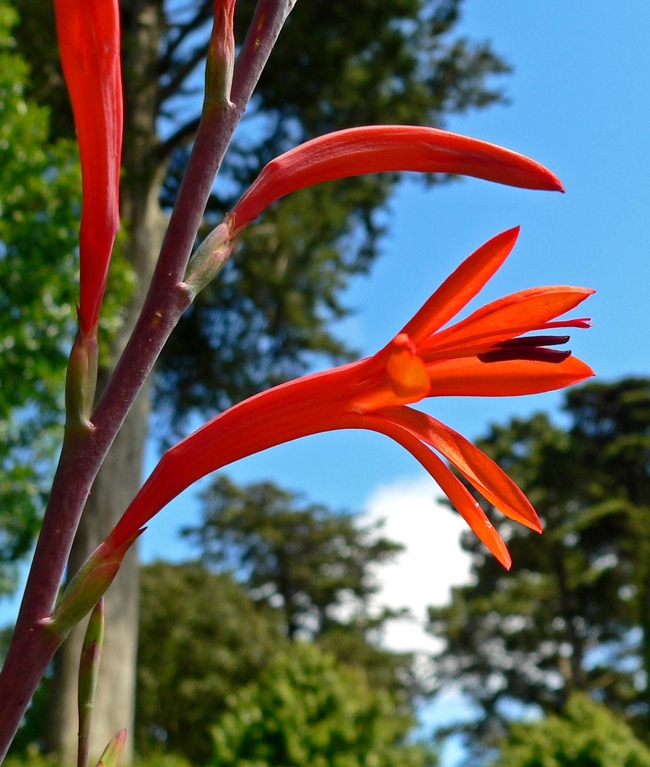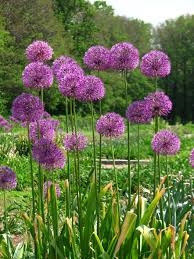By Carolyn Melf, Butte County Master Gardener, November 11, 2016.
At this time of year bulbs are appearing at nurseries and big retail stores as well as in the garden catalogs that arrive in your mail box. Many bulbs (like tulips) need to be chilled for 8-10 weeks in your refrigerator before replanting for blooms the following spring. Consider growing bulbs that are better suited to our warm climate. They are easier to grow, most are perennial, and they look their best in warm temperatures.
Since most failure with bulbs can be traced back to problems during planting, give yourself time for proper planning and planting. Plant in November to early December in our mild climate urban areas (zones 8 and 9). Bulbs must be planted at the correct depth, usually in a hole 3 times as deep as the size of the bulb. Fertilizing with a bulb booster (such as 4-12-8) or with organic bulb food is a good idea: place a few grains of the fertilizer in the bottom of the hole, cover with a fine layer of soil so the bulb does not come into direct contact with the material, and then add the bulb and fill the hole with soil. “Which end of the bulb is up?” you might wonder --- usually the pointy end is up, and the roots face downwards. But some bulbs are long and narrow, making it difficult to tell which end is the top. You can plant such a bulb on its side – growth will respond to gravity with shoots growing up and roots growing down. After covering the bulbs with soil, water the planted area well. Moisture must be present 6 to 8 inches below the surface to encourage root growth. Finally, avoid walking on the bulbs and compacting the soil.

Alliums are ornamental cousins of onions that aren't usually bothered by animals. Globular clusters of white, yellow, pink, red, blue or purple flowers are carried on stalks that rise above the foliage. They come in a variety heights, as well as colors, and can blend into any garden.
Crinum, a tall member of the amaryllis family, is topped with a circle of trumpet-shaped flowers, usually white, pink or a combination of both. Plant so the neck of the bulb is just above the soil and give it plenty of water while it is growing.
Gloriosa Lily is a tuberous perennial with red and yellow lily-like flower heads. It can sprawl and scramble through other plants, climbing by means of tendrils at the ends of its leaves. Plant 1 to 2 inches deep, and 10 to 15 inches apart, in rich soil.

Watsonia has tallspikes of tubular blossoms which come in shades of red, orange, pink and white. They begin blooming in late winter and carry on into the spring.
